Physical Address
304 North Cardinal St.
Dorchester Center, MA 02124
Physical Address
304 North Cardinal St.
Dorchester Center, MA 02124
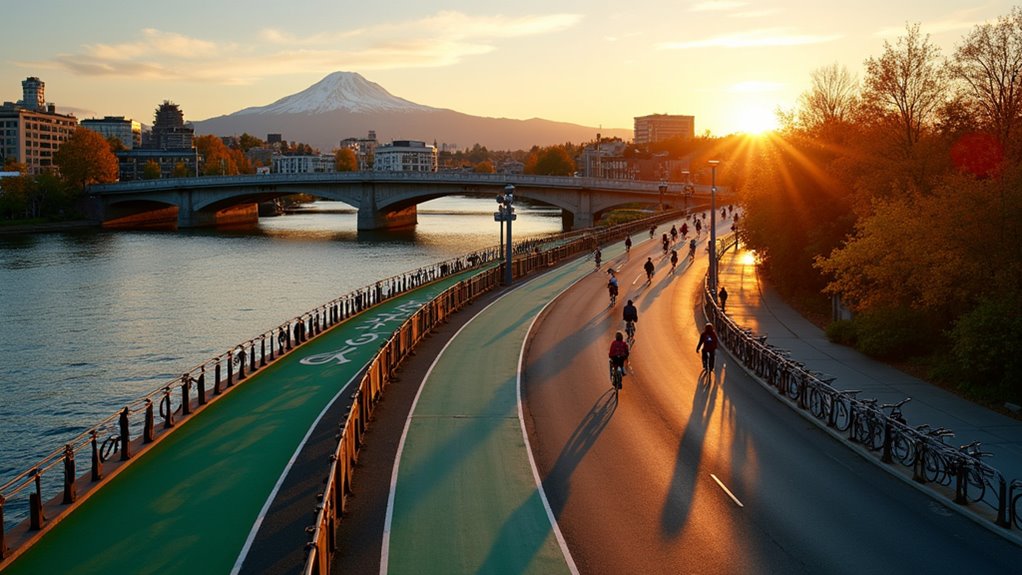
From coast to coast, discover America's most bike-friendly cities where cyclists rule the roads and car-free adventures await.
You’ve probably heard about bike-friendly cities in Europe, but the USA has its own impressive lineup of cycling havens. From car-free islands to mountain towns with extensive trail networks, America’s top biking destinations offer unique experiences you won’t find anywhere else. Whether you’re looking to ditch your car completely or just want to explore new places on two wheels, these cities have transformed their streets and culture to welcome cyclists. Let’s roll through America’s most pedal-powered places.
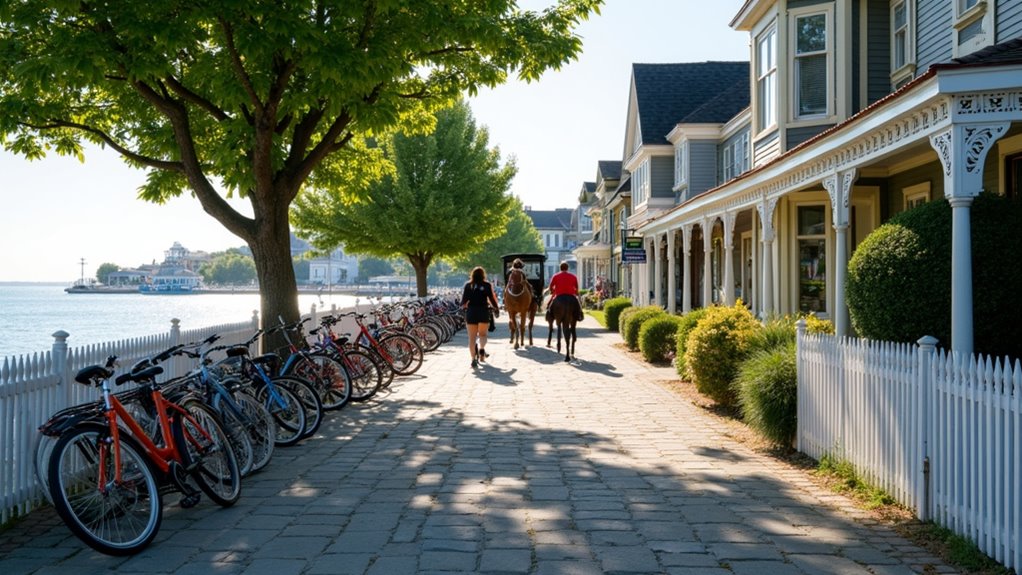
While many cities endeavor to become bike-friendly, Mackinac Island stands in a league of its own as America’s premier car-free cycling destination.
You’ll find yourself among 85,000 licensed bicycles on an island with fewer than 500 residents, earning it the world’s highest bike-friendly score of 99/100 from PeopleForBikes.
You can explore over 70 miles of trails, from flat scenic routes to challenging 300-foot bluff climbs. The island boasts an impressive 107 miles of low-stress biking paths.
The crown jewel is M-185, an 8.2-mile car-free route circling the island that you can complete in about 90 minutes.
Whether you’re bringing your own bike via ferry or renting one from local vendors, you’ll discover iconic landmarks like the Grand Hotel and Arch Rock while enjoying the island’s pristine environment and abundant cycling culture.
Ever wondered what makes a small coastal town become a cycling powerhouse? Search no further than Provincetown, Massachusetts, where bikes aren’t just a mode of transport—they’re a way of life.
With a population under 50,000, this charming coastal community has earned the second-highest PeopleForBikes rating in the nation. The city’s access score of 100 demonstrates perfect connectivity to essential services, jobs, and recreational areas.
You’ll find a cycling paradise where:
This biking haven proves that when it comes to cycling culture, size doesn’t matter—commitment does.
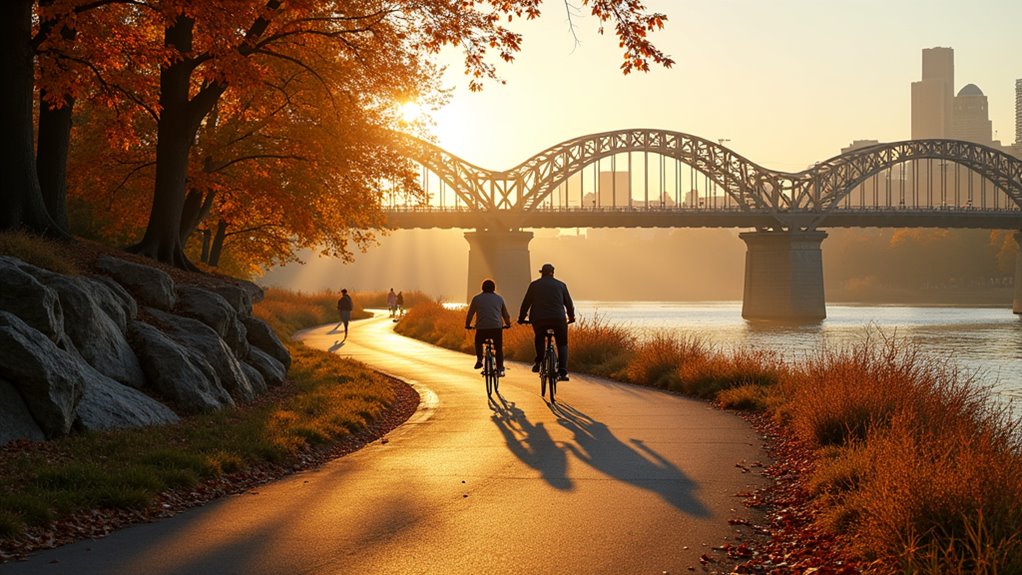
Since its inception over a century ago, Minneapolis has transformed into a cyclist’s dream with its crown jewel – the Grand Rounds Scenic Byway. This 51-mile loop offers you car-free cycling through the city’s most stunning landscapes, while former rail corridors like the Midtown Greenway provide grade-separated routes for your urban adventures. RV Camping is a popular alternative to tent camping in the nearby areas, allowing cyclists to explore the region with greater comfort and convenience.
You’ll find 16 miles of protected bikeways and 98 miles of bike lanes connecting key destinations throughout the Twin Cities. The West River Greenway sees impressive daily traffic, peaking at over 4,300 users during holiday weekends. Local advocacy groups have been instrumental in pushing for expanded bike infrastructure and safety improvements.
Whether you’re commuting to work or exploring recreationally, you’ll appreciate how the trails seamlessly integrate with existing infrastructure. The network’s strategic expansion continues to evolve, offering you both economic benefits and an environmentally friendly transportation alternative in America’s premier cycling city.
As America’s undisputed cycling capital, Portland boasts an impressive network of 385 miles of bikeways that’ll transform your daily commute into an urban adventure.
You’ll find yourself among the city’s 22,000 bike commuters enjoying various cycling infrastructure designed for safety and convenience. Recent data shows that cyclists benefit from 31 bike traffic signals strategically placed at key intersections.
Whether you’re a seasoned cyclist or just starting out, Portland’s cycling culture welcomes you.
The city’s commitment to two-wheeled transport shows in its record-breaking 7.2% bike commuter rate, and you’ll appreciate the thoughtful traffic-calming measures that make your ride smoother and safer.
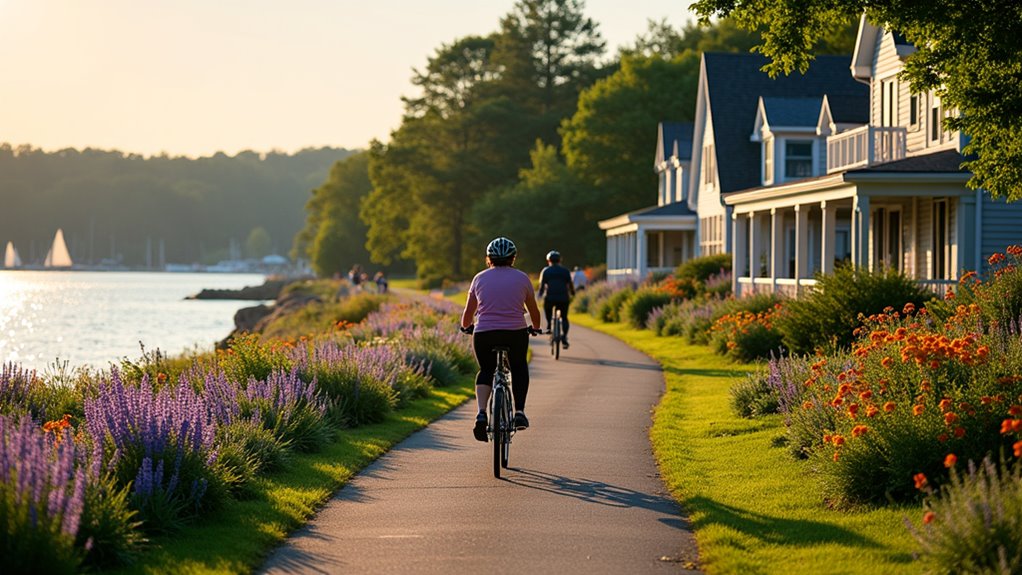
While Portland may reign as America’s cycling capital, Harbor Springs, Michigan, delivers an equally impressive cycling experience with its extensive 280-mile trail network.
You’ll find the crown jewel of the area, the Little Traverse Wheelway, stretching 26 miles and connecting three charming towns along Lake Michigan’s stunning shoreline. The trail follows the former Grand Rapids and Indiana Line that once served as a vital railway connection in the region. Top family-friendly campsites can also be found around Harbor Springs, offering a great outdoor experience for families.
Whether you’re craving mountain thrills at Boyne Highlands Resort or seeking a leisurely ride with panoramic lake views, you’ll discover 17 tracked routes to match your style.
The area’s bike-friendly infrastructure includes detailed trail maps, local bike shops, and convenient parking spots.
You’ll also notice how cycling has woven itself into Harbor Springs’ identity, with community events, active tourism, and local businesses all supporting the vibrant biking culture.
Despite its notorious hills, Seattle has pedaled its way into the upper echelon of America’s bike-friendly cities, landing in the 95th percentile nationwide and ranking 2nd in Washington state.
You’ll find a city committed to transforming itself into a cyclist’s paradise, with ambitious plans to quadruple ridership by 2030. The recent passage of Senate Bill 5687 has enabled local authorities to implement safer 20 mph speed limits on non-arterial roads, making cycling more accessible for riders of all skill levels.
Whether you’re a daily commuter or weekend warrior, Seattle’s evolving infrastructure makes cycling increasingly accessible, despite those challenging inclines.
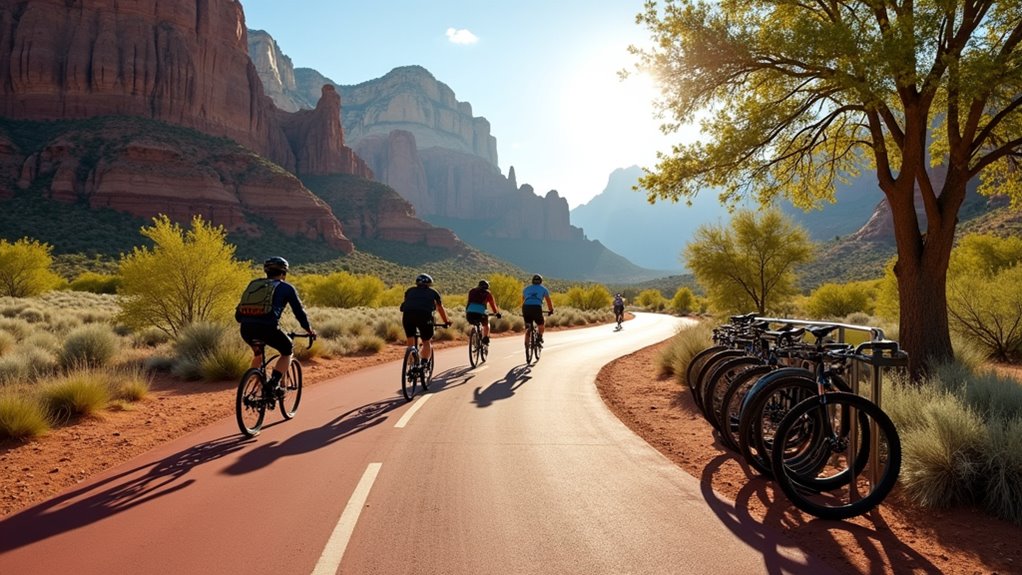
Three miles from the majestic cliffs of Zion National Park, Springdale has carved out its niche as America’s fourth most bike-friendly city, boasting an impressive 89/100 rating from PeopleForBikes.
Nestled near Zion’s towering cliffs, Springdale ranks among America’s top cycling destinations, earning elite status for its bike-friendly infrastructure.
You will desire to find this Utah gem perfectly positioned as a cycling hub, where protected bike lanes and well-connected networks make adventure riding accessible. SR9, the main thoroughfare, serves as your gateway to both urban exploration and wilderness excursions, though you should watch for occasional unmarked crossings. The city’s perfect network score reflects its exceptional connectivity to residential areas, employment centers, and essential services.
The town’s commitment to two-wheeled transport isn’t just about infrastructure – it’s woven into the community’s DNA. Local businesses cater to cyclists, while e-bikes are becoming increasingly popular on side streets.
Whether you’re planning multi-day park tours or casual rides, Springdale’s outdoor-focused culture and stunning surroundings make it a cyclist’s paradise.
As San Francisco’s iconic hills cradle a vast network of bike paths, you’ll discover a cycling infrastructure that rivals major European cities, boasting 23 miles of dedicated paths, 45 miles of bike lanes, and 132 miles of bike routes.
You’re part of a growing movement – with over 10.8 million bike trips recorded in 2019, you’ll join thousands of cyclists exploring the city’s diverse terrain. The Marina Bike Path stands out as the city’s most popular route, recording over 1 million cyclists annually.
Whether you’re commuting or joy-riding, you’ll find:
The city’s commitment to cycling shows in its continuous expansion, with recent additions of 9 miles of new bikeways and 57 upgraded intersections enhancing your urban riding experience.
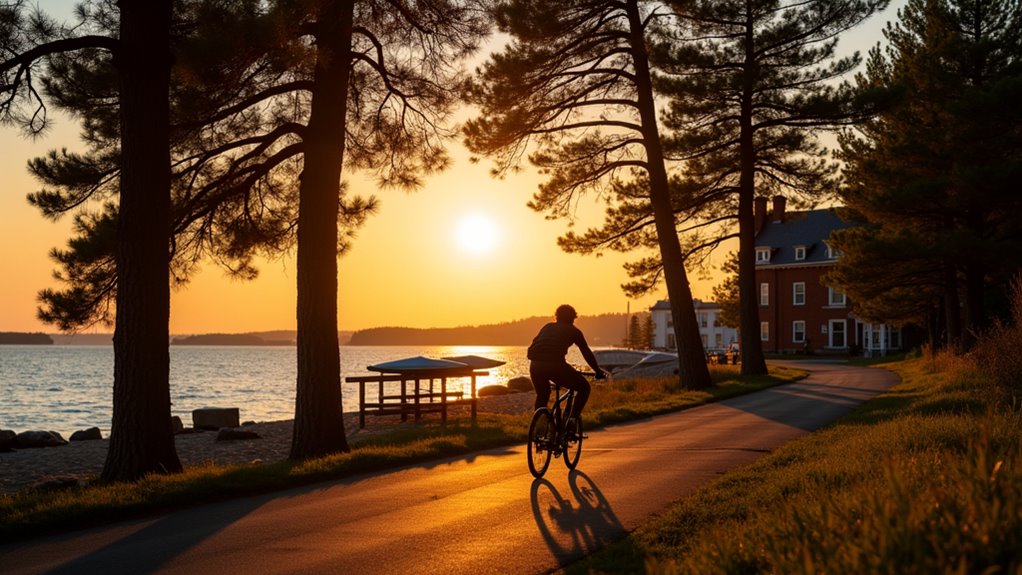
While many cyclists flock to major metropolitan areas, Washburn, Wisconsin has quietly emerged as a world-class biking destination, ranking sixth globally and fifth in the USA for its exceptional cycling infrastructure. Camping can improve mental well-being, which is an added benefit for cyclists exploring the region.
You’ll find yourself pedaling along Lake Superior’s stunning shoreline, where an extensive network of trails caters to every cycling preference. The area boasts 127 miles of e-bike trails, 104 miles of horse-compatible paths, and gems like the 13-mile Washburn Lake Trail. The volunteer-maintained trails ensure riders always have access to well-groomed paths throughout the season.
Don’t miss the Wildcat Mountain Bike Trail in the county forest for thrilling mountain biking adventures.
What’s particularly appealing is the region’s commitment to safety and accessibility. You’ll enjoy low-traffic country roads winding through northern Wisconsin’s forests and rolling hills, with well-maintained trails and convenient parking at major trailheads.
Since implementing its ambitious 2024 Bicycle Plan, St. Paul has transformed into a cycling paradise, rocketing to 4th place in PeopleForBikes City Ratings.
You’ll find an impressive network of protected lanes and shared-use paths connecting neighborhoods, parks, and business districts.
The numbers tell the success story – bike traffic has surged up to 160% at key intersections like Cleveland and Marshall Avenue.
Recent state climate legislation has further accelerated the city’s commitment to expanding transit service and constructing new bike infrastructure.
You’re in for a treat with these standout features:
You’ll appreciate how the city’s all-encompassing approach has created a seamless experience, whether you’re commuting to work or exploring the river city’s charm on two wheels.
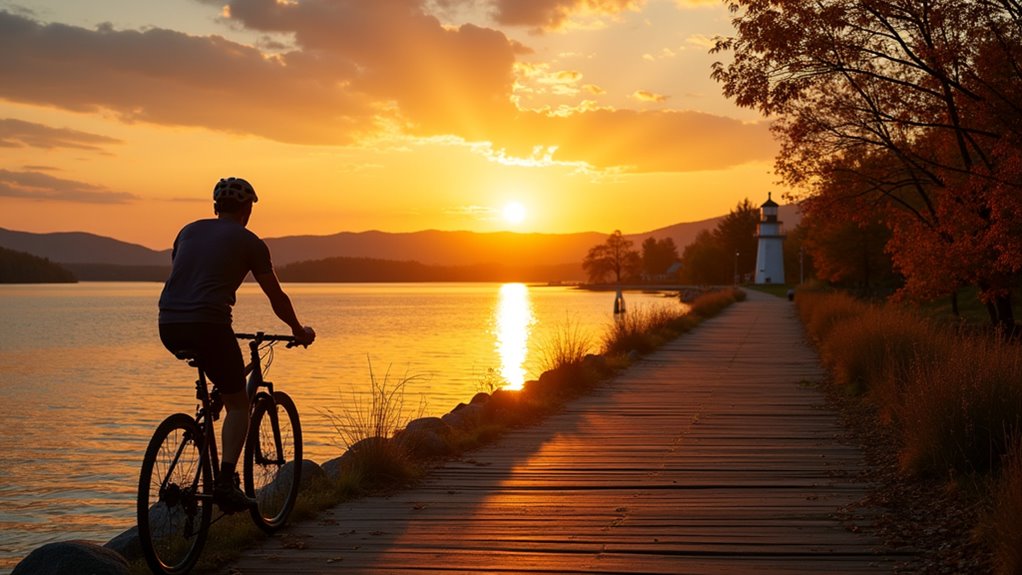
Located along the shores of Lake Champlain, Burlington has pedaled its way to becoming Vermont’s premier cycling destination, earning a Silver Bicycle Friendly Community status from the League of American Bicyclists.
You’ll find an extensive network of bike paths, sidepaths, bike lanes, and shared lanes throughout this vibrant city of 42,645 residents. Thanks to strategic infrastructure investments, Burlington’s cycling rate has doubled since 2010, with 5% of locals now commuting by bike. The city’s impressive 100 Network Score demonstrates its exceptional cycling connectivity.
Multi-lane road reconfigurations have made cycling safer, while groups like Local Motion advocate for continued improvements.
Despite Vermont’s challenging terrain, you’ll discover Burlington’s commitment to expanding its bike network is unwavering.
Whether you’re commuting to work or exploring the lakeside trails, you’ll experience firsthand why this city’s cycling culture keeps growing stronger.
Nestled against the stunning Flatirons, Boulder serves as a cycling paradise with its Platinum Bicycle Friendly Community status since 2004.
With a remarkable $390 million in funding secured over the next 15 years for multimodal transportation and mobility programs, Boulder continues to expand its cycling infrastructure.
You’ll find an impressive network of 28 miles of paved trails and over 300 miles of bike lanes that’ll make your cycling adventures a breeze.
The city’s continuous investments in cycling infrastructure prove why it’s a mountain town biking utopia you won’t want to miss.
You’ll find these top cycling cities aren’t just about pedaling—they’re reshaping American urban life. With Portland leading the pack at an impressive 6.3% of residents commuting by bike (nearly six times the national average), it’s clear these two-wheeled havens are revolutionizing transportation. Whether you’re cruising car-free Mackinac Island or tackling Boulder’s mountain trails, there’s never been a better time to join America’s cycling revolution.